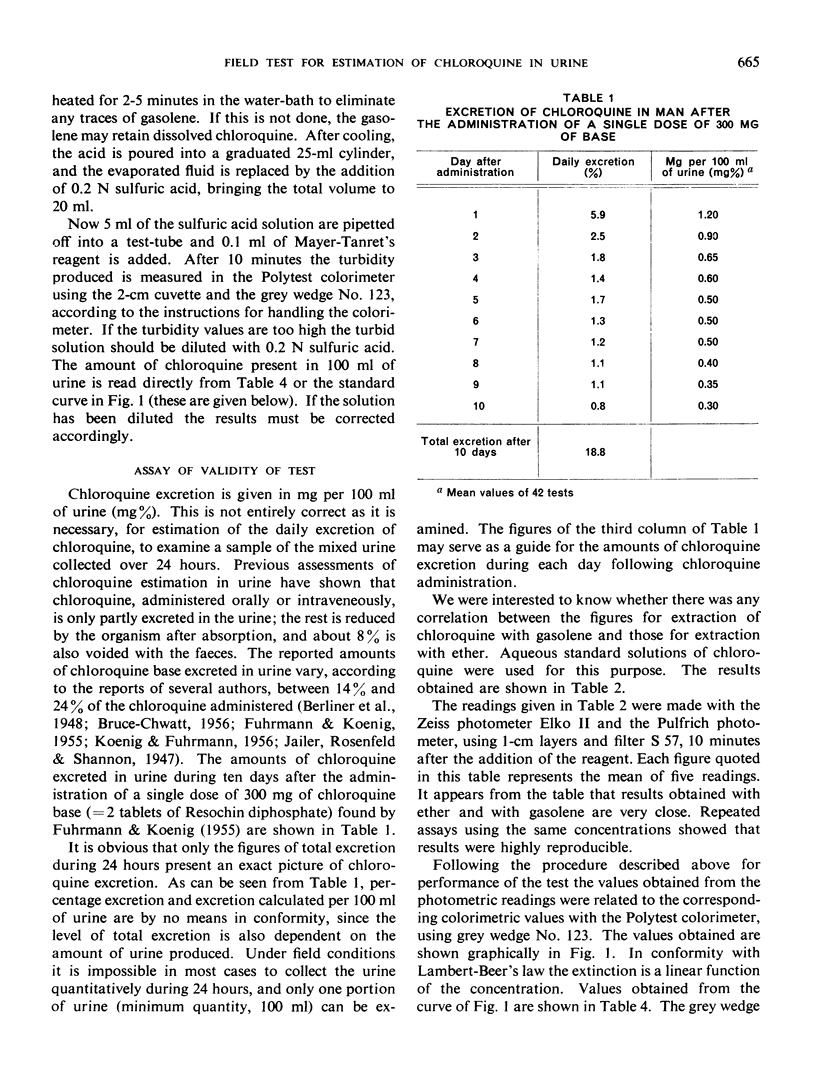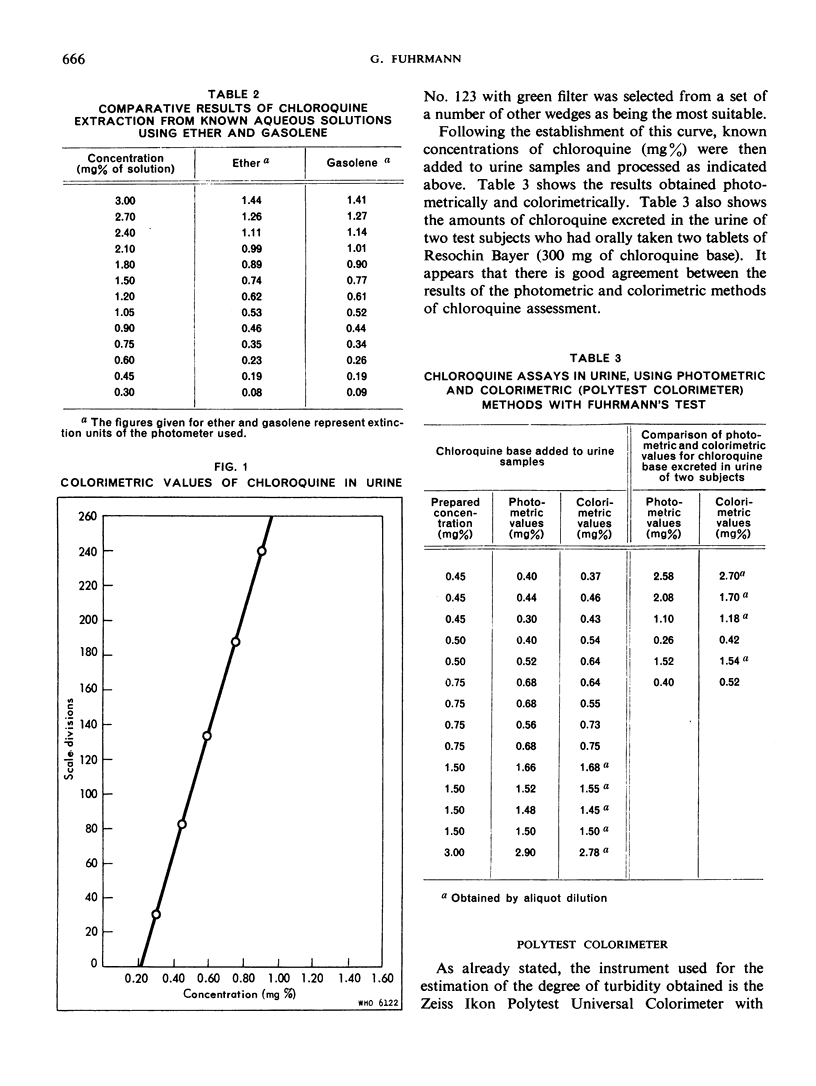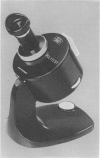Abstract
The use of antimalarial drugs is indissolubly linked with the use of insecticides in malaria eradication campaigns and is, indeed, of quite particular importance in areas in which insecticides have for various reasons—such as acquired resistance by anophelines—proved to be of limited value or in which residual spraying has ceased and potential foci of infection must be suppressed.
With the increasing use of chloroquine for mass prophylaxis it has become desirable to develop a reasonably simple technique for ensuring that the drug distributed is in fact taken regularly. The author describes a modification of a method first developed by him in 1950, which, although simpler than the original method, nevertheless permits the estimation of chloroquine in urine in amounts of 0.25-0.95 mg per 100 ml of urine. The equipment required, including a colorimeter needing no electrical current, is suitable for use in relatively primitive working conditions, and the test is designed for field application.
Full text
PDF





Images in this article
Selected References
These references are in PubMed. This may not be the complete list of references from this article.
- BRUCE-CHWATT L. J. Chemotherapy in relation to possibilities of malaria eradication in tropical Africa. Bull World Health Organ. 1956;15(3-5):852–862. [PMC free article] [PubMed] [Google Scholar]
- Berliner R. W., Earle D. P., Taggart J. V., Zubrod C. G., Welch W. J., Conan N. J., Bauman E., Scudder S. T., Shannon J. A. STUDIES ON THE CHEMOTHERAPY OF THE HUMAN MALARIAS. VI. THE PHYSIOLOGICAL DISPOSITION, ANTIMALARIAL ACTIVITY, AND TOXICITY OF SEVERAL DERIVATIVES OF 4-AMINOQUINOLINE. J Clin Invest. 1948 May;27(3 Pt 2):98–107. doi: 10.1172/JCI101980. [DOI] [PMC free article] [PubMed] [Google Scholar]
- FUHRMANN G., KOENIG K. Untersuchungen über die Resorption und Ausscheidung der oral anwendbaren Resochin (Chloroquin)-Salze. Z Tropenmed Parasitol. 1955 Dec;6(4):431–437. [PubMed] [Google Scholar]
- HASKINS W. T. A simple qualitative test for chloroquine in urine. Am J Trop Med Hyg. 1958 Mar;7(2):199–200. doi: 10.4269/ajtmh.1958.7.199. [DOI] [PubMed] [Google Scholar]
- Jailer J. W., Rosenfeld M., Shannon J. A. THE INFLUENCE OF ORALLY ADMINISTERED ALKALI AND ACID ON THE RENAL EXCRETION OF QUINACRINE, CHLOROQUINE AND SANTOQUINE. J Clin Invest. 1947 Nov;26(6):1168–1172. doi: 10.1172/JCI101909. [DOI] [PMC free article] [PubMed] [Google Scholar]



